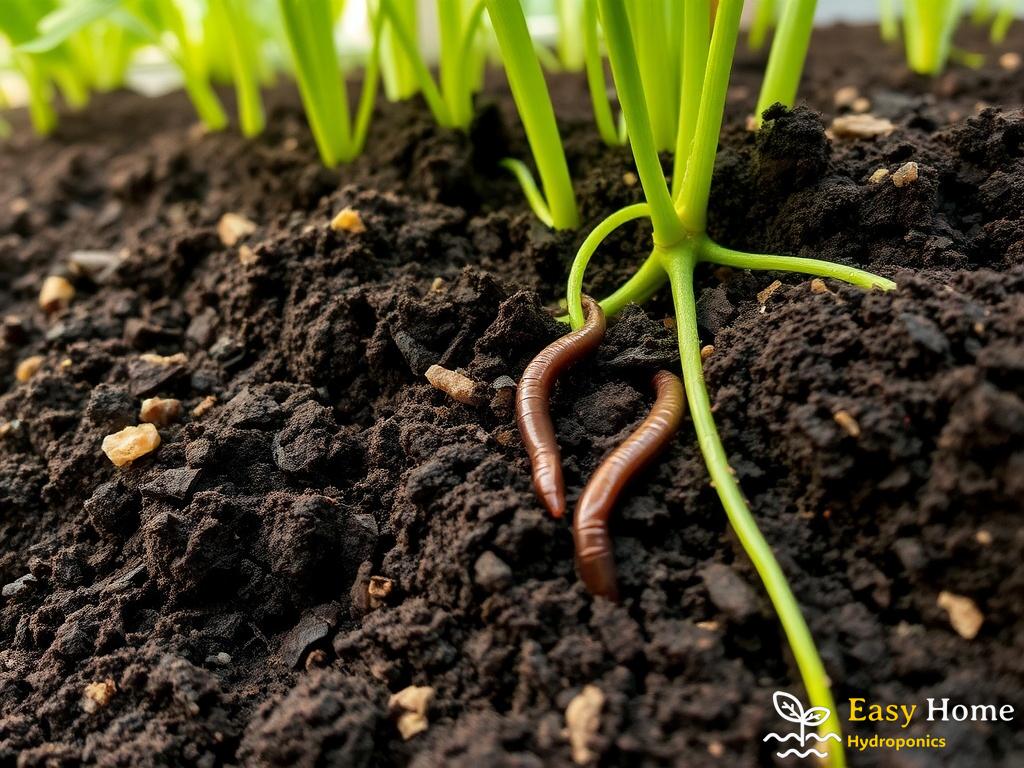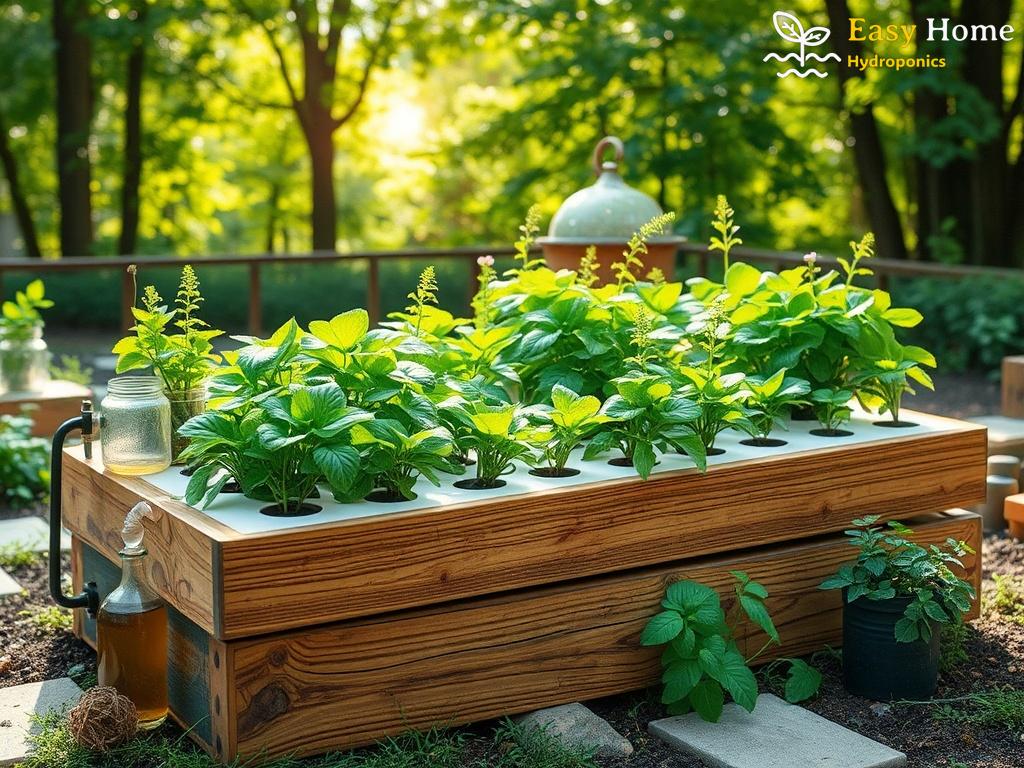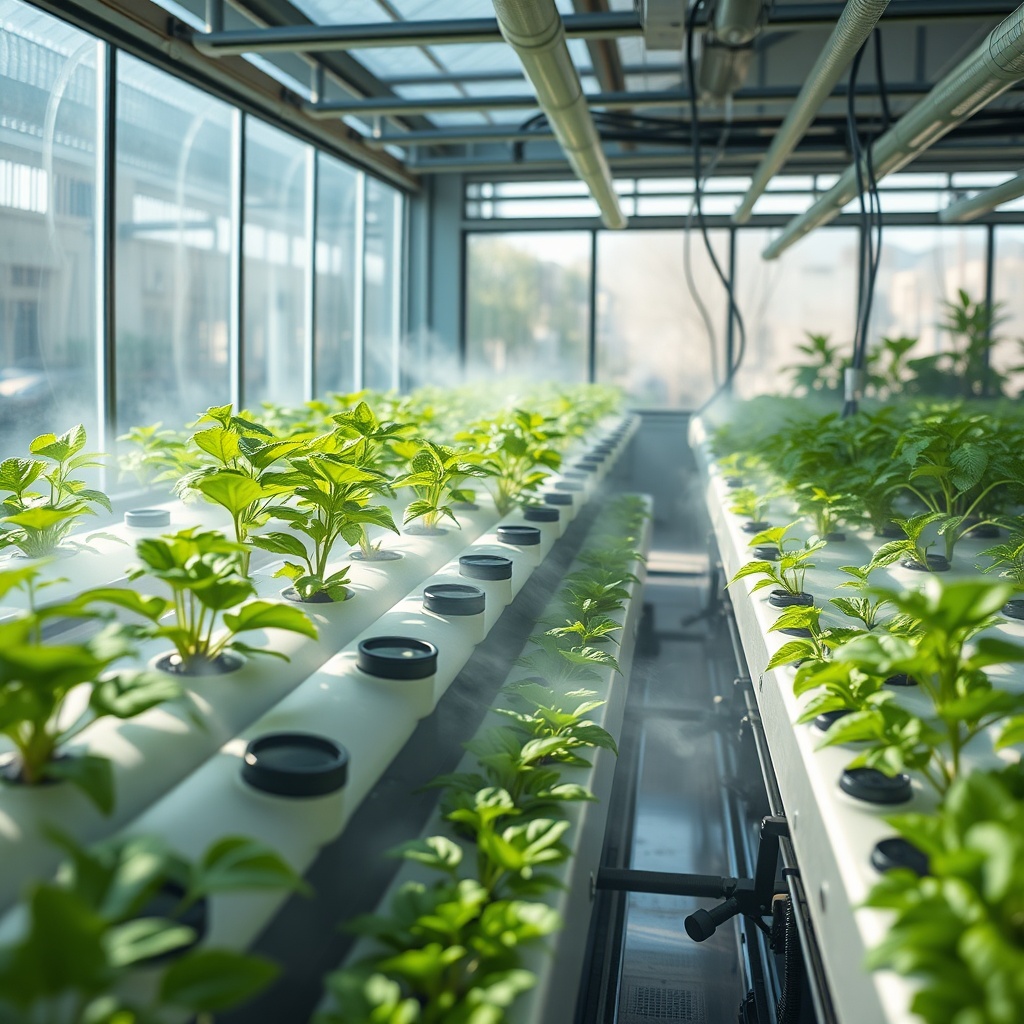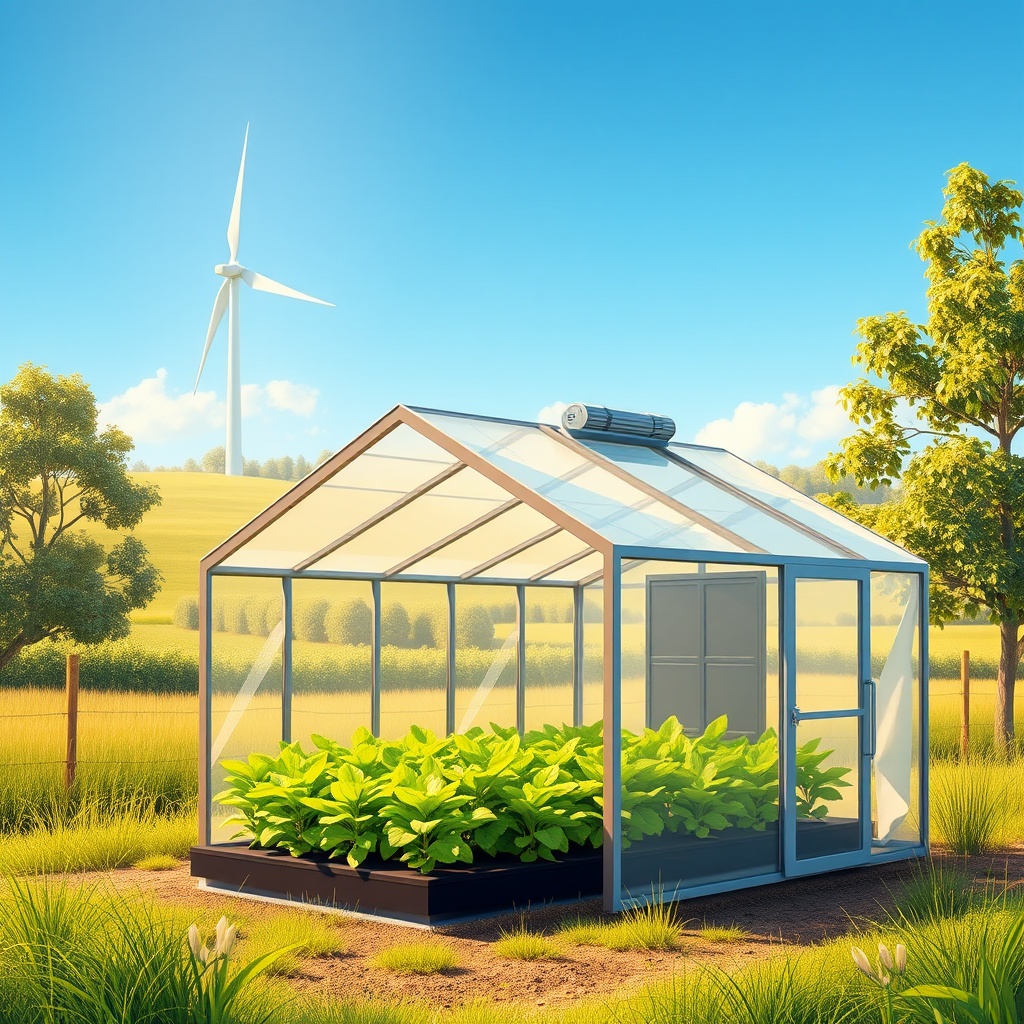Harnessing Cosmic Rhythms in Hydroponics

In the realm of gardening, many enthusiasts often overlook the profound impact that cosmic rhythms can have on plant growth. Biodynamic principles emphasize the importance of celestial bodies and their movements, suggesting that these cosmic forces can enhance the vitality of crops grown in hydroponic systems. By tuning into these rhythms, hydroponic gardeners can potentially unlock new levels of growth and vitality in their plants.
One of the most compelling aspects of biodynamic gardening is its focus on lunar cycles. The moon’s gravitational pull influences water levels on Earth, which can affect plant sap flow and nutrient uptake. For hydroponic gardeners, aligning planting and harvesting schedules with the lunar calendar can lead to improved yields and healthier plants. For example, planting during a waxing moon is believed to support vigorous growth, while harvesting during a waning moon may enhance storage qualities. Here’s a look at how the lunar phases can guide your hydroponic gardening:
- New Moon: Ideal for planting seeds and transplanting as energy is directed towards roots.
- Waxing Moon: Focus on growing plants, especially leafy greens and herbs.
- Full Moon: Best for harvesting, particularly for fruits and flowers.
- Waning Moon: Favorable for cultivation and weeding.
Incorporating cosmic rhythms into hydroponic gardening is not just about timing; it also involves the holistic management of the entire growing environment. Using biodynamic preparations and ensuring that the water and nutrient solutions are energetically vibrant can significantly impact plant health. Additionally, creating a balanced ecosystem within the hydroponic system, similar to how biodynamic farms are structured, can enhance the overall effectiveness of cosmic alignment.
To illustrate this, let’s consider a simple comparison between traditional hydroponics and biodynamic hydroponics:
| Aspect | Traditional Hydroponics | Biodynamic Hydroponics |
|---|---|---|
| Fertilization | Synthetic nutrients | Biodynamic preparations and organic nutrients |
| Planting Schedule | Based on market demand | Aligned with lunar and cosmic cycles |
| Environmental Control | Focused on optimal conditions | Incorporates natural rhythms and balances |
By embracing these biodynamic principles, hydroponic gardeners can not only grow more healthily but also foster a deeper connection between their plants and the universe. The integration of cosmic rhythms into hydroponic gardening opens up a new frontier for those looking to elevate their cultivation practices.
Soil Health Secrets: Enhancing Nutrient Bioavailability

In the evolving landscape of hydroponic gardening, the integration of biodynamic principles has opened up new pathways to explore not only the growth of plants but also the health of the underlying systems that support them. Central to this exploration is the understanding of soil health, even in soil-less environments. By enhancing nutrient bioavailability, hydroponic gardeners can maximize the potential of their systems, leading to robust and vibrant crops.
Understanding Nutrient Bioavailability is crucial for anyone engaged in hydroponics. While traditional soil gardening relies on microbial activity to break down organic matter, hydroponic systems necessitate a different approach, often utilizing nutrient solutions that can sometimes fall short in delivering the full spectrum of needed minerals and trace elements. The biodynamic approach encourages the use of natural preparations, which not only increase the nutrients available but also enhance their absorption by plants. This is akin to creating a symphony, where each nutrient plays a vital role in the overall health of the plant.
Incorporating biodynamic preparations into hydroponic gardening can transform the nutrient landscape. These preparations, made from fermented plant materials, minerals, and animal manures, are designed to stimulate soil life and improve nutrient uptake. They function similarly to a probiotic for plants, enhancing microbial activity and promoting a more balanced nutrient profile. For instance, using preparations such as horn manure (BD500) can significantly boost the microbiome within the nutrient solution, facilitating better absorption of nutrients. This connection mimics the natural processes found in healthy soil systems, ultimately leading to more nutrient-dense produce.
The key to maximizing nutrient bioavailability lies in creating a balanced nutrient solution that mimics natural conditions. This includes paying attention to pH levels, electrical conductivity (EC), and the ratios of macro and micronutrients. Additionally, the timing of nutrient application, aligned with lunar cycles, can enhance the effectiveness of these solutions. For example, applying nutrients during a waxing moon can optimize nutrient uptake, as plants are energetically more receptive during this phase.
Incorporating organic matter, even in a hydroponic setting, can further enhance nutrient bioavailability. Utilizing compost teas or worm castings can introduce beneficial microorganisms and enzymes that help break down nutrients, making them more accessible to plants. This holistic approach, rooted in biodynamic principles, fosters a thriving ecosystem within the hydroponic system, reminiscent of the rich interactions found in traditional soil gardening.
| Aspect | Traditional Hydroponics | Biodynamic Hydroponics |
|---|---|---|
| Nutrient Source | Synthetic solutions | Natural preparations |
| Microbial Health | Limited | Enhanced through biodynamic practices |
| Plant Health | Dependent on nutrient ratios | Improved through holistic ecosystem management |
By understanding and implementing these biodynamic principles, hydroponic gardeners can unlock the secrets to enhancing nutrient bioavailability, leading to healthier and more productive plants. This not only serves the immediate goal of better crop yields but also contributes to a more sustainable and ecologically balanced approach to modern gardening.
Biodynamic Preparations: The Magic Mix for Hydroponics
In the quest for lush and bountiful hydroponic gardens, biodynamic preparations emerge as the secret potion, a blend of nature’s finest elements that can elevate plant health and vitality. These preparations are not just random mixtures; they are meticulously crafted concoctions that resonate with the rhythms of the cosmos and the needs of the plants. By incorporating these biodynamic elixirs into hydroponic systems, gardeners can tap into a world where plants thrive in harmony with their environment, creating a vibrant ecosystem even in soil-less settings.
Biodynamic preparations consist of a variety of organic materials, each selected for its unique properties and benefits. From fermented plant extracts to animal manures, these ingredients are designed to enhance microbial activity and nutrient dynamics within the hydroponic system. The magic lies in their ability to stimulate plant growth and fortify resistance against pests and diseases. Here are some key biodynamic preparations that can turn your hydroponic garden into a powerhouse of productivity:
- Horn Manure (BD500): This preparation, made from cow manure packed into a cow horn and buried in the ground, is known to enhance soil vitality and microbial activity. When used in hydroponics, it can significantly boost nutrient absorption.
- Comfrey Tea: Rich in potassium, this herbal infusion supports flowering and fruiting phases, making it an excellent addition during critical growth stages.
- Yarrow Flower (BD502): Known for its ability to enhance plant health and resilience, yarrow can help strengthen the overall immune system of hydroponic crops.
Creating your own biodynamic preparations may seem daunting, but it can be a rewarding experience that enhances your connection with nature. Start by gathering organic materials, such as herbs, flowers, and manures, and let them ferment in an appropriate medium. For instance, compost teas can be brewed to introduce beneficial microbes into your nutrient solution. Remember, the timing of your preparations can align with lunar phases to maximize their effectiveness, making the process not only a gardening method but an engaging ritual.
Ultimately, by infusing your hydroponic garden with these biodynamic preparations, you’re not just cultivating plants; you’re embracing a philosophy that respects the intricate web of life that supports them. It’s a journey toward a more sustainable and harmonious way of gardening that promises not only richer harvests but also a deeper connection to the natural world.
Composting in Hydroponics: A Sustainable Approach
In the pursuit of a more sustainable hydroponic gardening practice, composting emerges as a powerful ally, bridging the gap between traditional soil-based cultivation and modern soilless systems. By integrating composting into hydroponics, gardeners can not only recycle organic waste but also enhance the nutrient profile of their systems, fostering plant health and vitality. This approach resonates deeply with biodynamic principles, which emphasize the importance of creating a closed-loop system that mimics nature and promotes ecological balance.
Composting in hydroponics serves as a mechanism for enriching nutrient dynamics in a way that synthetic fertilizers simply cannot replicate. By utilizing compost teas—liquid extracts made from composted organic matter—gardeners introduce a wealth of beneficial microorganisms and nutrients directly into their hydroponic systems. This process not only enhances microbial activity but also improves nutrient bioavailability, allowing plants to absorb essential minerals more efficiently. The symbiotic relationship formed between microorganisms and plants supports robust growth, making composting an invaluable tool in any biodynamic hydroponic operation.
Rather than viewing composting as merely a method of waste disposal, biodynamic hydroponic gardeners can see it as a way to cultivate a living ecosystem within their systems. By integrating compost rich in diverse organic materials, such as kitchen scraps, garden clippings, and even certain animal manures, gardeners introduce a variety of nutrients and microbial life that enrich the nutrient solution. This diversity is essential for fostering resilience and promoting plant health, as different microorganisms play unique roles in nutrient cycling and disease suppression. Moreover, the practice of composting aligns with the lunar cycles, allowing gardeners to apply compost teas at optimal times for maximum effectiveness.
Integrating Biodiversity: Companion Planting Strategies
As hydroponic gardening continues to evolve, the integration of biodiversity through companion planting strategies is becoming a prominent theme. This approach not only enhances the health of individual plants but also creates a thriving ecosystem within a hydroponic environment. By strategically pairing plants based on their beneficial relationships, gardeners can optimize growth, deter pests, and improve overall yields, all while adhering to biodynamic principles.
Companion planting is an ancient gardening practice that involves growing different plants together for mutual benefit. In hydroponics, this concept takes on a new dimension, allowing gardeners to harness the power of plant interactions in a soil-less environment. The right combinations can lead to improved nutrient uptake, enhanced pest resistance, and even better flavor profiles in produce.
Integrating biodiversity into hydroponic gardening brings a plethora of benefits that align with the biodynamic philosophy. A diverse plant community can:
- Boost Nutrient Uptake: Different plants have varying nutrient needs and can complement each other, leading to more efficient use of the nutrient solution.
- Enhance Pest Management: Certain plants naturally repel pests or attract beneficial insects, reducing the need for chemical interventions.
- Improve Microbial Activity: A variety of plants can support a more complex microbial ecosystem, enhancing nutrient cycling and plant health.
To illustrate the potential of companion planting in hydroponics, consider these classic pairings:
- Basil and Tomatoes: Basil not only enhances the flavor of tomatoes but also acts as a pest repellent.
- Marigolds and Cucumbers: Marigolds deter cucumber beetles, providing a protective barrier for the cucumbers.
- Parsley and Peppers: Parsley can improve the growth of pepper plants, creating a harmonious growing environment.
Implementing companion planting strategies in your hydroponic system requires thoughtful planning and consideration of plant compatibility. Start by researching the needs and benefits of potential companion plants, taking into account factors such as growth habits, nutrient requirements, and pest resistance. Experimentation is key—try different combinations and observe the results, adjusting your approach based on what thrives in your specific setup.
By embracing biodiversity through companion planting, hydroponic gardeners can cultivate not only healthier plants but also a deeper connection to the ecological principles that underpin biodynamic gardening. This innovative approach not only enriches the gardening experience but also contributes to a more sustainable and resilient food system.




